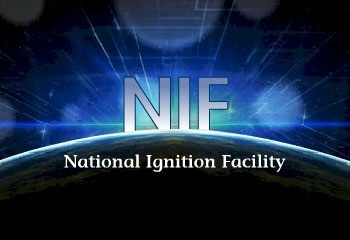Part 1 of 2 Parts
For fusion power researchers, hitting “breakeven” is something of a Holy Grail. It is the point at which a fusion reaction produces more power than was required to ignite it. Only one scientific experiment, at the U.S. National Ignition Facility (NIF), has accomplished that feat. It took over a decade of tweaking the system to achieve the monumental result.
The National Ignition Facility (NIF) is a laser-based inertial confinement fusion (ICF) research device located at Lawrence Livermore National Laboratory in Livermore, California, United States. Its mission is to achieve fusion ignition with high energy gain.
Zap Energy is constructing a seriously cheap, compact, scalable fusion energy technology with potentially the shortest path to commercially viable fusion and orders of magnitude less capital than traditional approaches. This breakthrough technology confines and compresses plasma without costly and complex magnetic coils.
Benj Conway is the co-founder and CEO of Zap Energy. He said, “The day of the NIF result was, obviously, this incredibly celebrated scientific result. They all deserve Nobel Prizes. But you know, the day after, the question is, well, so what? What next?”
While the NIF has managed to improve upon its first result, its device is considered to be a dead end. It was only meant to probe the limits of physics, not sell power to the grid.
Zap’s answer, so far, is a new device it calls Century. It recently raised a one hundred and thirty million dollars Series D. After keeping the details of the Century project under wraps for several months, the startup gave reporters a peek under the hood recently. They shared exclusive details about its operation and what they hope to learn by using it.
Zap is taking a unique approach to fusion power known as sheared-flow-stabilized Z-pinch process. Instead of using magnets or lasers to squeeze the plasma, it sends a bolt of electricity through a stream of plasma. That current generates a magnetic field that compresses the plasma and ends up creating a fusion reaction. The company has been researching the phenomenon through a series of devices at its facilities in Washington state.
Z-pinch fusion has been around since the 1950s, but it was deemed ineffective because the plasma created fizzles out incredibly quickly. The company claims that its sheared-flow stabilization can extend the lifespan of the plasma produced almost indefinitely. This allows it to continue to generate energy for as long as needed.
Century is designed to simulate fusion power plant operation by firing high-voltage pulses of power every ten seconds for more than two hours. This will permit Zap to test power supplies, plasma-facing circulating liquid metal walls, and its technology to try to reduce electrode damage in the reactor.
Conway said that Century isn’t just another physics testbed. He continued, “Our focus is not just on physics, but also on systems engineering. We’re not just a plasma physics company. We’re developing all of the key enabling technologies that we’re going to need to deliver commercial fusion. We think that doing all of this in parallel — everything all-together, all-at-once type thing — is the fastest way to actually deliver a commercial product. Century is the incarnation of that.”
Nuclear Fusion 86 – Zap Energy Developing Unique Fusion Reactor The Utilizes Z-Pinch – Part 1 of 2 Parts

